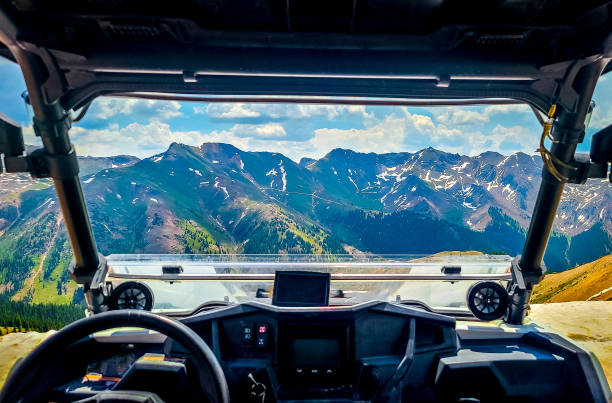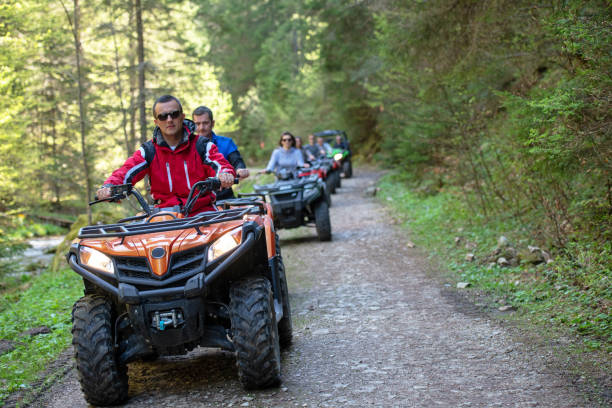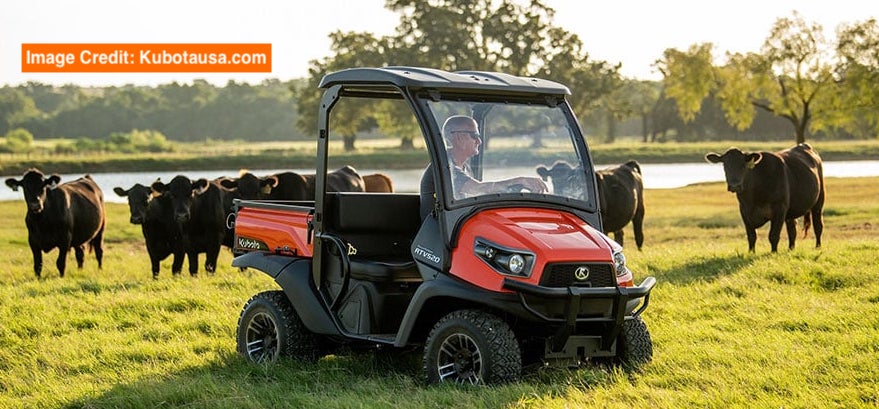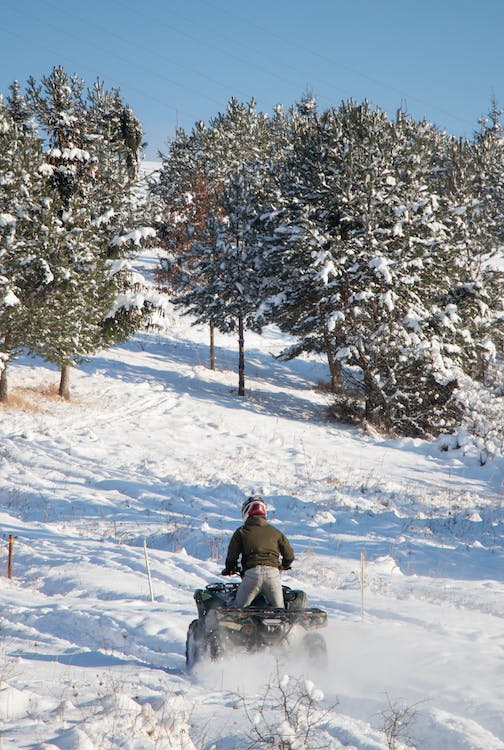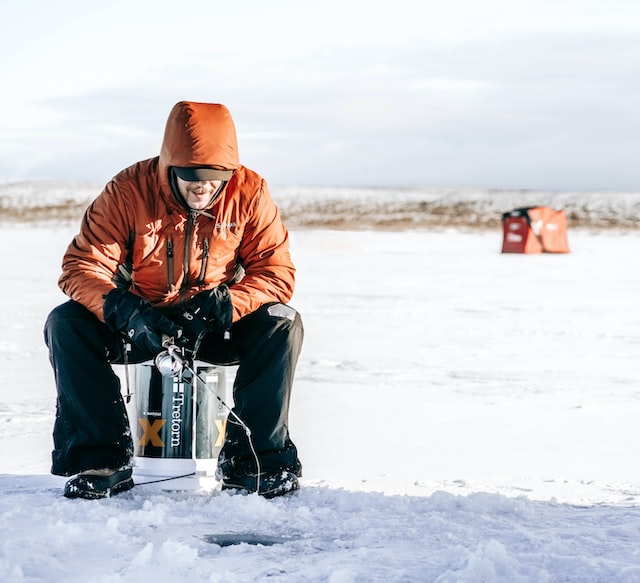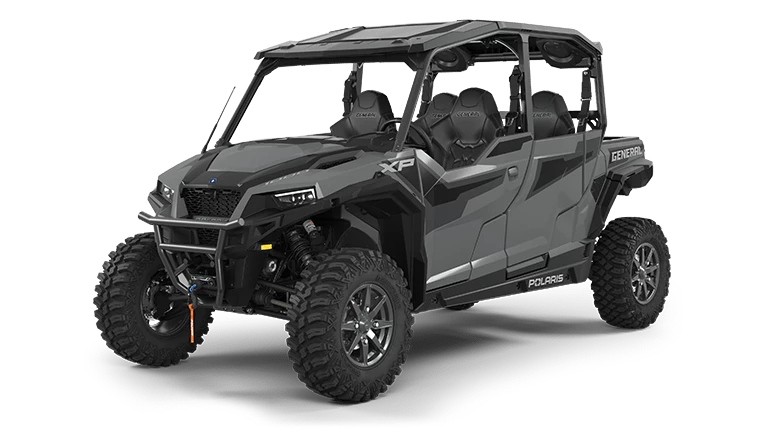As an Amazon Associate I may earn a commission from qualifying purchases at no additional cost to you.
Choosing the right vehicle for young enthusiasts can be challenging for parents keen on introducing their kids to the thrill of motorsports.
All-terrain vehicles (ATVs) and side by sides offer distinct experiences, each with unique benefits that cater to different user preferences and safety considerations.
For young riders, the decision often hinges on factors such as ease of control, safety features, and the type of terrain they plan to explore.

ATVs, often referred to as quads, are usually lighter and more agile than their side by side counterparts. This makes them appealing for children who enjoy a more hands-on, solitary riding experience.
The balance and coordination skills developed while riding ATVs can be beneficial in honing their focus and reflexes. ATVs typically require more physical involvement, which can be a great way for active youngsters to engage with their environment.
On the other hand, side by sides provide additional safety features such as roll cages and seat belts, offering more peace of mind to concerned parents.
These vehicles can seat multiple passengers, making it a more social experience and allowing parents to supervise more easily.
The decision between ATVs and side by sides depends on the child’s age, experience level, and what parents prioritize in terms of safety and driving experience.
Understanding ATVs

All-terrain vehicles, commonly known as ATVs, offer a rugged and thrilling way for young riders to experience off-road adventures. They feature distinguishing characteristics and come with both benefits and challenges when used by kids.
Characteristics of ATVs
ATVs are four-wheeled off-road vehicles designed specifically for varied terrains. Equipped with low-pressure tires, they can navigate dirt tracks, muddy paths, and rocky trails with ease.
The lightweight frame offers agility, making them ideal for narrow paths.
Steering is akin to a motorcycle’s, using handlebars for control. With engines varying from 50cc to 700cc, they cater to a wide range of ages and skill levels.
Built-in safety features, such as governors to limit speed, are common in models designed for younger users.
Benefits and Challenges of ATVs for Kids
ATVs provide children an exciting way to build confidence and develop motor skills. The thrill of navigating different terrains helps foster resilience and adaptability.
With proper ATV safety gear and parental supervision, children can enjoy a safe riding experience.
Nevertheless, there are challenges. Ensuring the right size and power for the child is essential to prevent accidents.
Proper training is vital to help kids learn the basics of off-road vehicle operation. Additionally, enforcing strict adherence to safety guidelines is crucial to minimize risks on the trail.
Understanding Side by Sides
Side by sides are versatile recreational vehicles designed for both work and play. They offer unique characteristics that make them distinct from traditional ATVs.
Characteristics of Side by Sides
Side by sides, also known as utility task vehicles (UTVs), can seat two to six passengers. They come with a steering wheel, unlike ATVs, which use handlebars.
Their design includes roll cages, providing added safety, which is a significant advantage for young or inexperienced riders.
These vehicles typically offer more storage space, making them suitable for carrying equipment or supplies.
Many models include features like seatbelts, windshields, and roof options, enhancing their usability in various environments. Side by sides can be used for recreational activities or work-related tasks due to their robust build and versatility.
Comparing Side by Sides to ATVs
A key difference between side by sides and ATVs is the seating arrangement. ATVs are designed for single riders or, occasionally, one passenger. Side by sides accommodate multiple passengers, making them ideal for family outings.
When it comes to safety, side by sides generally offer more protection. Standard features often include roll cages and seatbelts, which are not normally found on ATVs. This makes them a safer option for children and less experienced drivers.
While ATVs might be more agile and maneuverable in certain terrains, side by sides provide stability and comfort, especially on longer outings. Their ability to transport multiple passengers and cargo makes them an attractive choice for those seeking a more versatile recreational vehicle.
ATV Safety and Legislation
ATV safety is essential for young riders, incorporating crucial features to minimize risks. Understanding legislation helps ensure compliance with regulations that govern the use of ATVs.
ATV Safety Features
Key safety features on ATVs are vital for protecting young riders. Low-pressure tires offer better shock absorption, enhancing stability on rough terrain. Engines with restricted speed capabilities ensure young enthusiasts do not exceed safe limits.
An important feature is the automatic headlight that improves visibility during low-light conditions.
Safety lanyards shut off the engine if the rider falls off, preventing the ATV from moving unpredictably. Color-coded controls simplify operation by making essential switches and buttons easily identifiable.
It’s crucial for caregivers to emphasize the necessity of wearing protective gear. Helmets, gloves, and boots offer significant protection. Training and supervision further ensure safe riding experiences for kids.
Understanding ATV Laws
ATV laws regulate age restrictions, usage, and proper equipment. The U.S. Consumer Product Safety Commission provides guidelines to ensure that manufacturers follow safety standards. Age-specific regulations often necessitate that youth ATVs cater to riders under 16, limiting engine size and speed.
Certain states require ATVs to be registered for off-road use. Some areas enforce restrictions on riding at night or without lights.
Proper safety equipment, such as helmets and protective gear, is often mandated by law for riders of all ages.
Operators must be aware of and comply with these laws to avoid penalties and ensure everyone’s safety. Riding on public roads is commonly prohibited to prevent accidents with larger vehicles. Understanding local rules is key to navigating ATV laws effectively.
Choosing the Right Vehicle for Your Kid
When deciding between ATVs and side by sides for kids, it’s important to evaluate factors like safety features, ease of use, and parental controls. Each type of vehicle offers unique benefits tailored to young riders’ needs.
Factors to Consider
Safety is paramount. Vehicles should come with seat belts, roll cages, and safety nets.
Consider ease of control. ATV models with throttle limiters and automatic transmissions can help kids focus on steering.
The age and maturity of the child are also critical. Most ATVs have age recommendations.
Parental supervision is essential. Always ensure kids wear helmets and protective gear. User-friendly features, like speed governors, can help manage safety.
Understand local laws as some regions may have restrictions on certain types of vehicles.
Side by Sides for Beginners
Side by sides offer enclosed seating and additional passenger space—ideal for younger riders. These vehicles often come with seat belts and doors, enhancing safety.
Automatic transmission simplifies operation, making it easier for beginners. The presence of a roll cage provides an extra layer of protection.
Parents can ride alongside their kids for better supervision, ensuring proper guidance and enhancing confidence.
Side by sides tend to be larger, so ensure your child can reach the pedals and controls comfortably. Frequent safety training is crucial. Practice sessions in controlled environments can aid in mastering essential driving skills.
Safety Precautions and Training
Introducing young enthusiasts to ATVs and side by sides requires careful attention to safety measures and proper training. Ensuring that children receive adequate instruction and supervision is essential for minimizing risks.
Importance of Safety Training
Safety training is a crucial element in preparing children for operating ATVs or side by sides. It focuses on educating young riders about the mechanics of the vehicle, proper riding techniques, and hazard awareness.
Training sessions often incorporate interactive elements and simulations to engage children effectively.
Safety advocates and organizations like the Consumer Federation of America stress the need for formal training programs. They recommend starting with basic handling skills and gradually increasing complexity. These courses may include hands-on practice sessions and video tutorials.
Certified instructors guide students through structured programs. They emphasize the importance of wearing protective gear, such as helmets, gloves, and protective clothing.
Attention is also given to understanding vehicle limits and the environment where the vehicle is driven.
Role of Parents in Safety
Parents play a pivotal role in ensuring their child’s safety when operating ATVs or side by sides.
Active parental supervision is essential in promoting responsible riding habits and reinforcing safety rules learned in training.
Parents are encouraged to participate in safety courses alongside their children to better understand the risks and safety measures.
Setting clear boundaries and rules, such as designated riding areas and speed limits, is necessary.
Parents can also create a checklist of safety precautions to review before each ride. Regular maintenance checks and ensuring that the vehicle is age-appropriate for the child are also responsibilities that parents should prioritize.
Maintaining a dialogue about safety and experiences encourages a culture of safe riding practices.
Statistical Awareness of Risks
Statistics play a vital role in understanding the potential risks associated with ATV and side-by-side usage among young riders. Recognizing these risks helps parents make informed decisions about their children’s recreational activities.
ATV-Related Accidents and Trends
ATV-related accidents are a significant concern for safety advocates. According to the U.S. Consumer Product Safety Commission (CPSC), thousands of injuries and over 200 deaths occur annually due to ATV incidents.
Children under 16 represent a notable percentage of these statistics, highlighting the risks for younger operators.
ATV manufacturers continuously work to enhance safety features, yet challenges remain. Despite advancements, uneven terrains and high speeds contribute to reduced control, increasing accident risks. Riders often underestimate these threats, leading to higher injury rates, particularly in rural areas like Iowa, where ATV usage is prevalent.
Local and National Statistics
On a national scale, the CPSC provides data showing fluctuations in ATV-related accidents and fatalities over the years.
Iowa exemplifies a region where ATV use is widespread, with local statistics reflecting trends similar to national figures. This data offers insights into how these vehicles are used across different terrains and demographics.
Locally, such statistics guide efforts in crafting legislation aimed at improving safety measures.
Community-based education programs often emerge from these findings, emphasizing helmet usage and proper training.
For more comprehensive safety, it is crucial to analyze these statistics and understand patterns linked to different age groups and geographic areas.
Advocacy and Future Outlook

ATV manufacturers and safety advocates are central to promoting safe use and future developments in off-road vehicles for young users.
Role of ATV Manufacturers
ATV manufacturers focus on developing safer vehicles tailored for young riders.
They invest in innovative technologies, such as advanced braking systems and speed limiters. These features help enhance control and safety for inexperienced users.
Manufacturers are also working with regulatory bodies to ensure age-appropriate design standards. By adhering to guidelines, they aim to minimize the risk associated with youth ATV riding.
Educational campaigns and partnerships with local communities play a role in spreading awareness.
By offering training programs and promoting safety gear usage, manufacturers contribute to a safer riding experience for young enthusiasts.
Efforts of Safety Advocates
Safety advocates, including the Consumer Federation of America, lobby for stringent safety standards and regulations.
Their efforts focus on ensuring that legislative measures protect young riders.
Advocates push for mandatory training courses and stress the importance of certified helmets and protective clothing.
They engage in community outreach to educate parents and young riders about potential hazards.
By organizing workshops, safety advocates highlight the benefits of precautionary measures and informed decision-making.
Collaborations between these entities and stakeholders encourage safer practices.
By emphasizing informed usage, safety advocates help reduce accidents and reinforce the importance of safety in recreational activities involving ATVs and side-by-sides.

